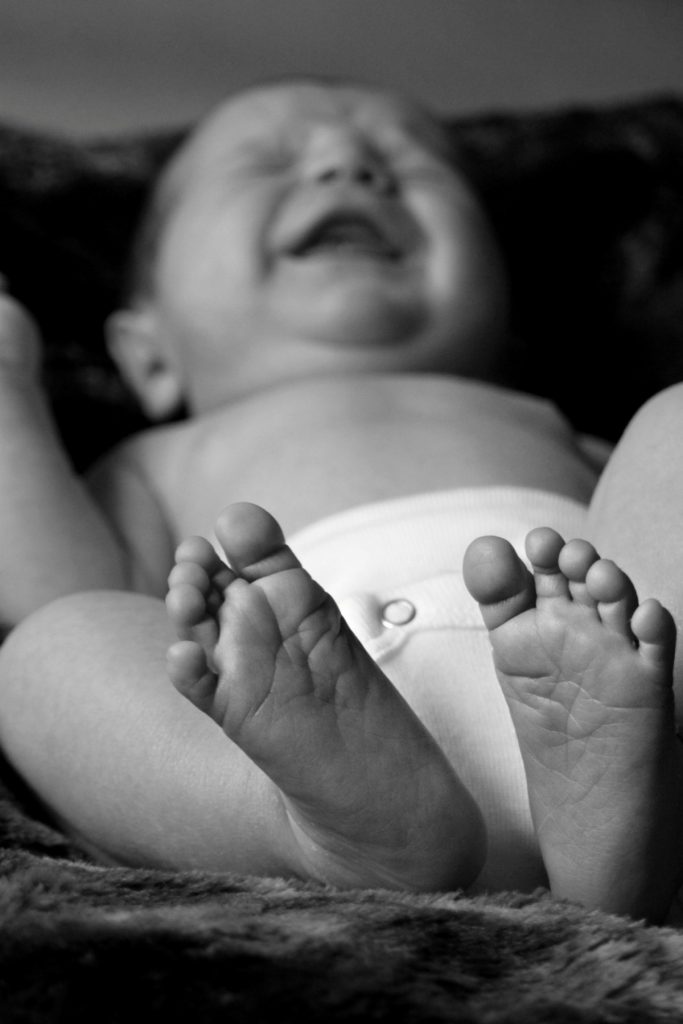Colic and Crying Babies
Colic has been blamed on everything and everyone from wind in the intestines, an allergy to breast milk, urinary tract infections, hernia and the parents. One thing is known for sure, the screams from a baby with colic demand attention.
Occasional short bursts of crying from a baby in a clear strong voice are normal. Persistent high-pitched screams with a red face and the legs pulled up indicate a problem with digestion according to Traditional Chinese Medicine.
Baby’s digestive systems are immature and often cannot deal efficiently even with mother’s milk for the first few months. This is why the advice from generations of Chinese paediatric specialists is to not feed babies on demand. Feeding at regular intervals allows the stomach and intestines time to transform the milk. Even so, it is still possible for the milk to accumulate and create a problem, called food stagnation in Chinese Medicine. Feeding the child in an attempt to stop the crying will generally exacerbate the problem as more food is layered on top of food already accumulated in the stomach and intestines.
Feeding at regular intervals will help set up the child’s general physical and emotional wellbeing for the future and contribute to the prevention of childhood illnesses.
Treatments for colic from Chinese Medicine are generally effective and relatively quick. Chinese massage (Tui Na), acupuncture and Chinese herbal medicine can all be used with babies.
Find and instantly book affordable GPs within AustraliaGet on top of your general health
Chinese massage is the least invasive and can be taught easily to the parents to be used preventatively. A couple who had come to see me about the wife’s back pain were in the waiting room and I heard their child begin crying loudly and kicking its legs seemingly in pain. The husband tried to console the baby but with a weary and resigned expression said they had been up at night for weeks trying to deal with the problem.
I taught him a couple of simple massage techniques to be used on the baby’s legs and abdomen. The massage was applied along the Stomach meridian on the lower legs and aimed to simulate the digestive processes. The baby calmed a little and the mother was able to feed him. The massage was applied to the legs again after feeding. The next time they visited, the husband was smiling as he reported they had applied the massage regularly and the crying had subsided over a few days.
Acupuncture can be used quickly and without discomfort to the baby. But be ready for a big poo from 20 minutes to several hours after the treatment. This extra large deposit usually indicates the food stagnation has been partially if not completely removed and a quiet and less anxious baby will be the result. For difficult cases, several acupuncture treatments may be necessary.
Chinese herbs are often saved for the most difficult cases, although they can be combined with massage and acupuncture for greater effect. Fortunately the amount of the herbs needed is very small and can be given with an eyedropper into the mouth or added to the milk.
The Traditional Chinese medicine practitioner will check with the parents, and by palpating the baby’s skin and abdomen, for other clinical features like constipation, a hot body and strong smells. These will indicate the extent of the food stagnation and if it has transformed into Heat. An individualised prescription can then be designed to eliminate the food stagnation and any other associated conditions.
There is some anecdotal evidence that the mother’s milk for babies with colic may be less of a problem if the diet of the mother is modified by avoiding vegetables from the cabbage family, onions and garlic, coffee and chocolate and legumes (beans).
The Chinese medicine strategies then for colic are to use regular feeds to promote digestion, very gentle abdominal massage in the direction of the intestinal flow as a preventative treatment and other Chinese massage techniques as suggested by your Chinese medicine practitioner, and acupuncture or Chinese herbs for stubborn cases.
A: Use HealthEngine to find and book your next GP appointment. Click on the following locations to find a GP clinic in your state or territory.
This article is for informational purposes only and should not be taken as medical advice. If in doubt, HealthEngine recommends consulting with a registered health practitioner.
All content and media on the HealthEngine Blog is created and published online for informational purposes only. It is not intended to be a substitute for professional medical advice and should not be relied on as health or personal advice. Always seek the guidance of your doctor or other qualified health professional with any questions you may have regarding your health or a medical condition. Never disregard the advice of a medical professional, or delay in seeking it because of something you have read on this Website. If you think you may have a medical emergency, call your doctor, go to the nearest hospital emergency department, or call the emergency services immediately.








